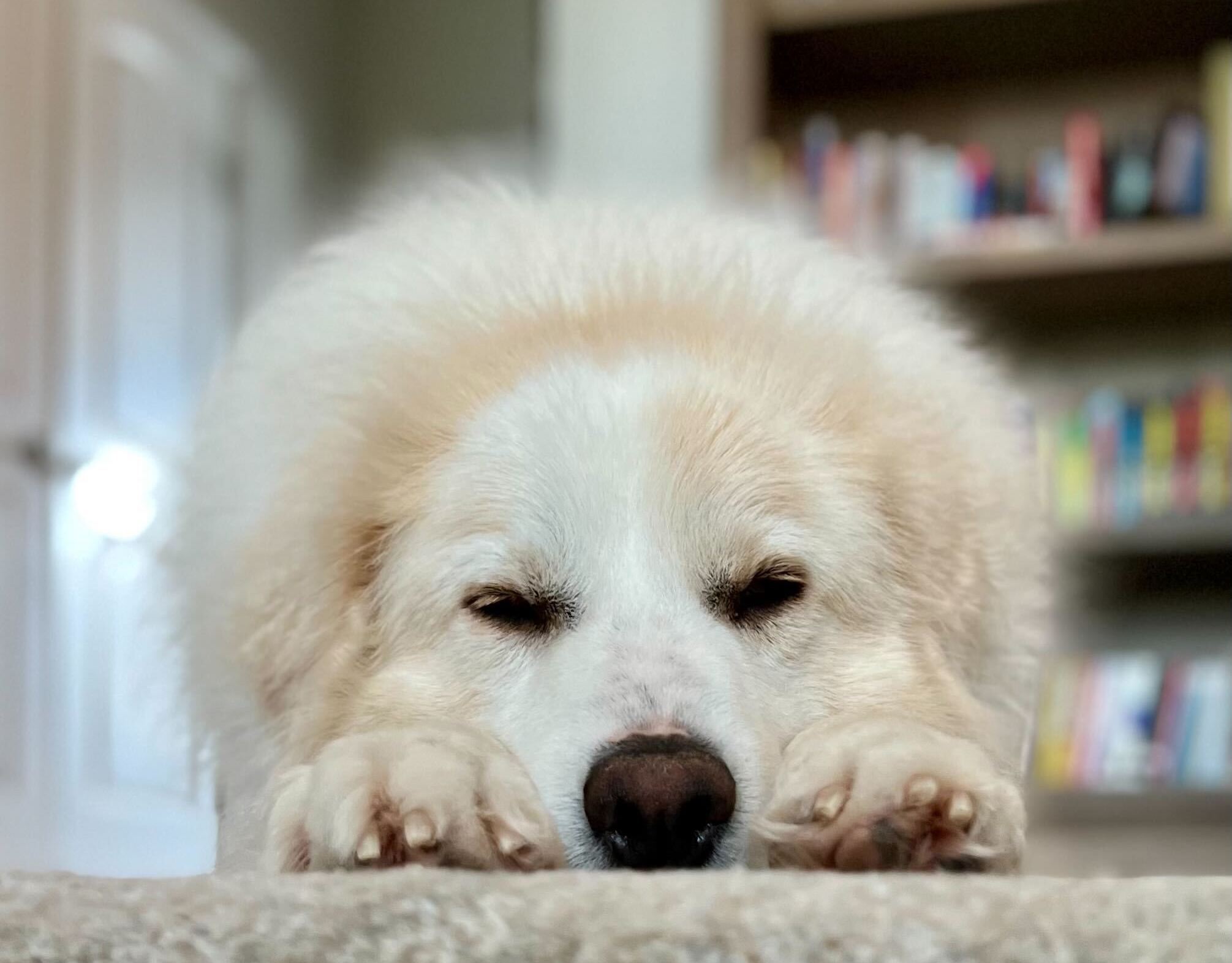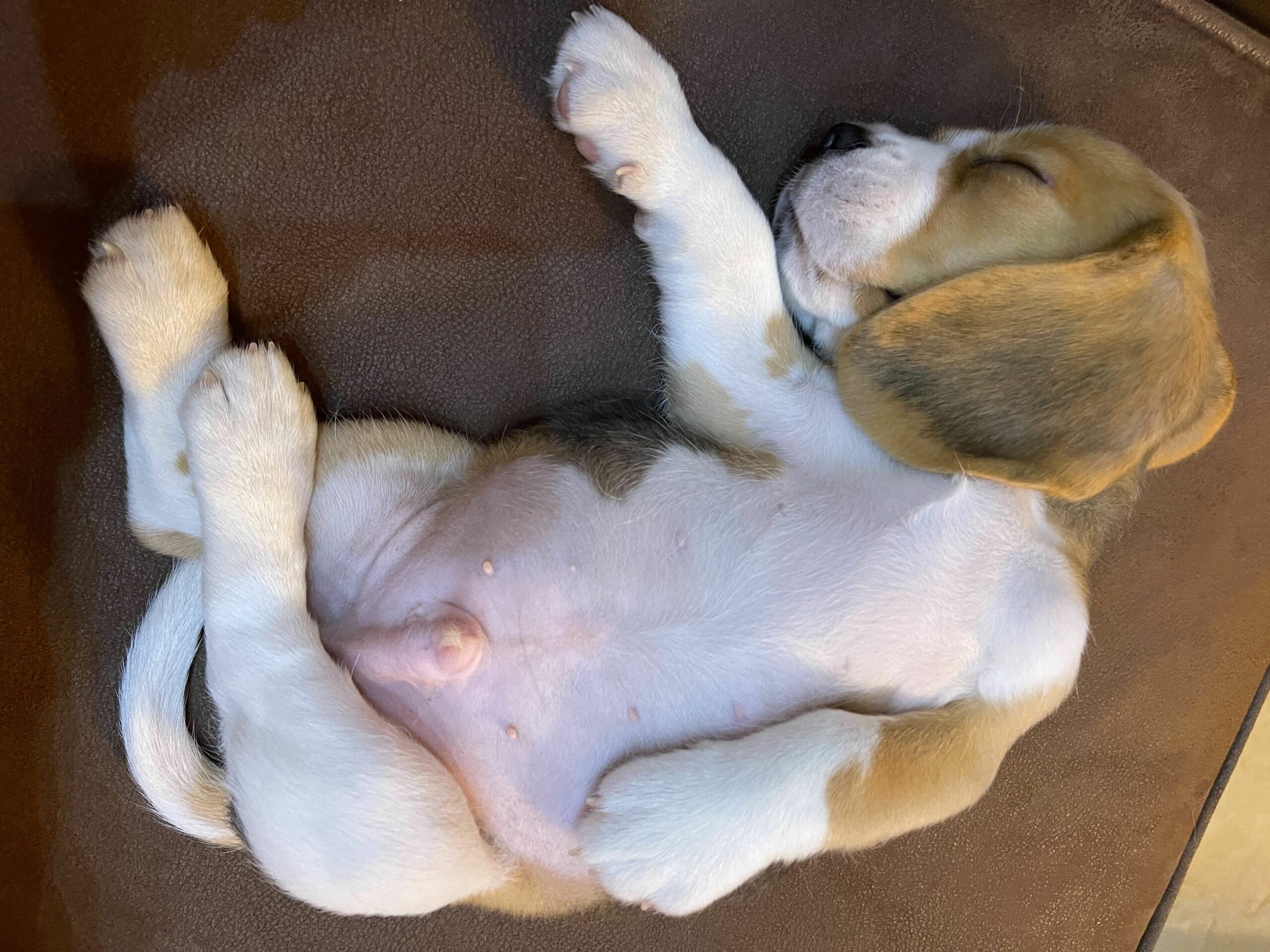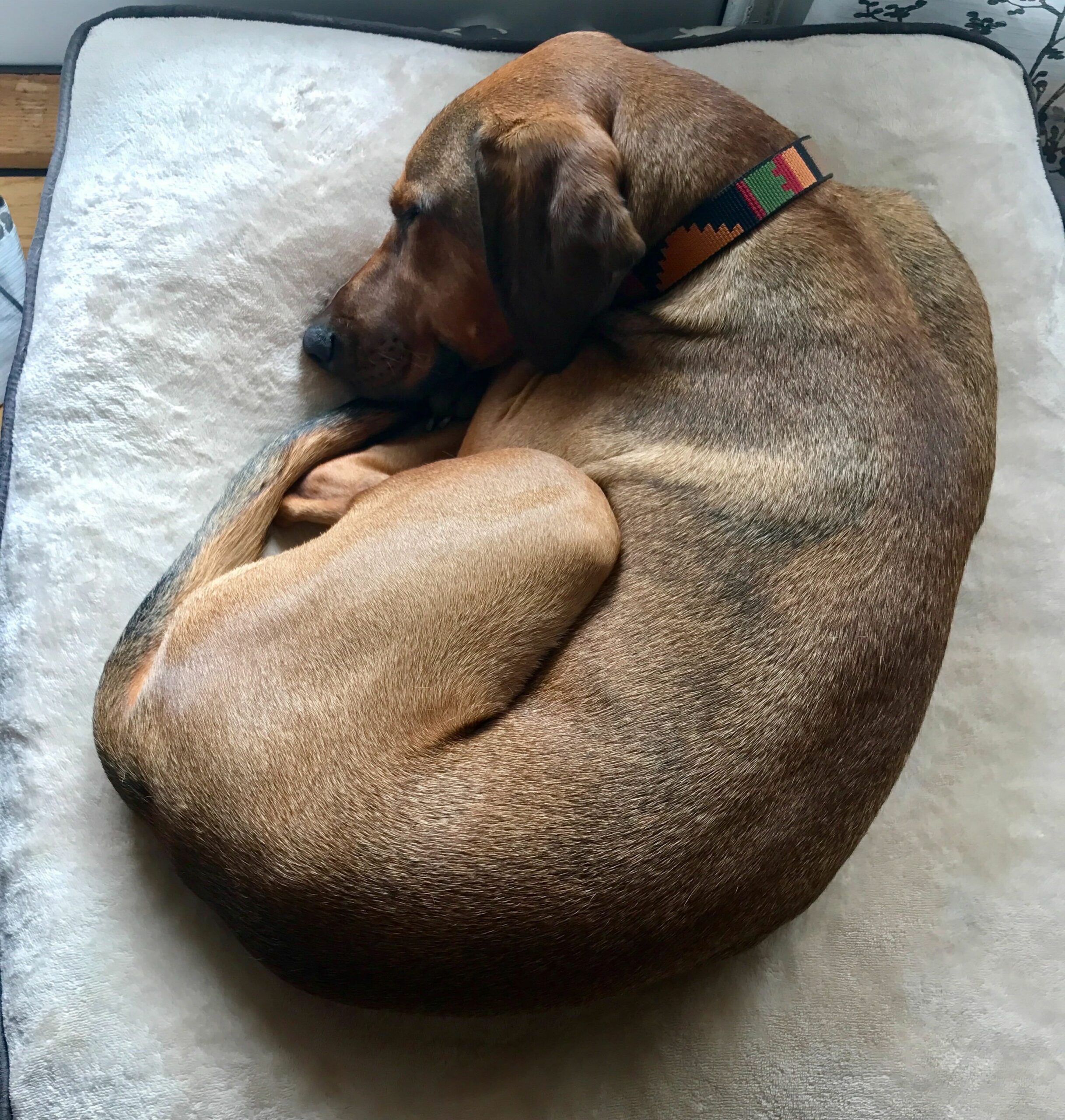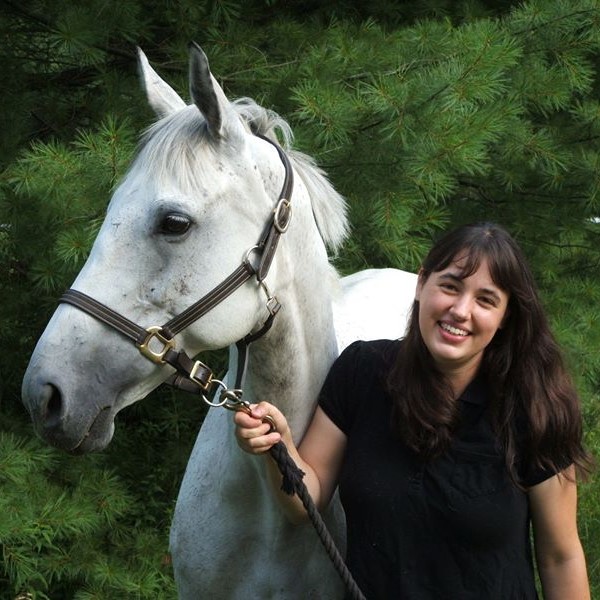Every dog has their preferred sleeping positions. And how your dog sleeps can provide you with important information about how secure your best friend feels, as well as whether your pup might be experiencing some physical discomfort that you should be aware of.
By understanding what common sleeping positions for dogs mean, you can better recognize what your pup’s snoozing body language suggests about their comfort and overall health.
7 common dog sleeping positions
The lion’s pose

In the lion’s pose or sphinx pose, your dog will place their paws flat down on the ground, then go to sleep with their head on top of their paws. Dogs can quickly get up from this position. They may choose it when they only want to sleep lightly—just a quick micro-snooze before getting back to the important stuff, like chasing squirrels around the yard.
Head elevated
Some dogs choose to sleep in a position that allows their head to be elevated above the rest of their body. They might achieve this position by putting their head on a pillow or arm of the couch.
While this position is totally normal, this neck raised position could indicate that your pup is having difficulty with their breathing, or that they have a condition like heart disease. Don’t stress, but if you notice your dog starts to sleep in this position, look for symptoms like rapid breathing or noisy breathing. Contact your vet and schedule a checkup if you notice any of these symptoms. Otherwise, just enjoy the cuteness.
On the back

Some dogs prefer to sleep on their backs, their bellies exposed and their legs up in the air. It might be funny to see your dog in such a state—a bit like they passed out after a long night of partying—but this sleeping position indicates that your dog is comfortable in their surroundings. By sleeping with the belly up, a dog is making themselves vulnerable and exposing their vital organs. They’re showing that they trust you.
Side sleeping
Many dogs sleep on their sides with their legs extended and an ear pressed to the bed or ground. This side sleeping position often indicates that your dog is comfy and trusts their surroundings. Some older dogs whose joints are sore will choose this side sleeper position, since it prevents their body weight from pressing against their joints.
The donut

If your dog is a donut-sleeper, you’ll notice they curl themselves up tightly and draw their legs up against their body. This position can help your dog to feel secure, so it’s a common choice for canines who may be adjusting to a new home. It’s also ideal if the temperature is a little chilly, since it helps to conserve precious body heat.
The ‘Superman’ position
Also called ‘the sploot’ or ‘frogging,’ the Superman position is quite the sight! In this position, your pup will lie on their stomach with their front legs stretched out in front of them and their back legs stretched out behind them. They’ll essentially look like they’re flying—all that’s missing is a cape.
Many dogs choose the Superman position when they’re hot and want to cool off. They can also quickly and easily get up from this position when they’re only taking a light snooze.
Burrowing
Your dog might love to burrow down into their dog bed or to even dig down under the covers. This burrowing position might indicate that your dog wants to feel secure when they sleep. It might also be your dog’s way of finding a cozy spot to curl up in when temperatures drop.
How many hours do dogs sleep a day?
Adult dogs need about 12 hours of sleep per day. When dogs sleep, their bodies process the information that they’ve gathered during the day. Sleep also helps to support the immune system, so a well-rested dog is better able to fight off infections than a sleep-deprived pup.
Senior dogs tend to sleep more, since their bodies need more rest to recover from their daily activities. Large breed dogs also need more time to rest and recover than their smaller cousins, since their bodies have to work harder to move around during the day. In contrast, smaller breed dogs may require less sleep.
Puppies may be full of energy, but they need lots of sleep—often from 18 to 20 hours per day. Sleep contributes to the growth and development of a puppy’s brain, immune system, muscles and nervous system, so it’s important to include plenty of sleeping time in your puppy’s schedule.
If you notice a sudden increase or decrease in your pup’s sleeping habits, especially when accompanied by other symptoms, like overall lethargy, it might be a good idea to consult with your vet.
Also keep in mind that certain medications can also cause your pup to snooze more.
Do dogs dream?
Seems like it!
When humans and dogs sleep, our brains function similarly. When your dog falls asleep, they’ll initially experience a slow wave sleep period, during which it’s pretty easy to wake them up.
As your dog enters a deeper stage of sleep, called rapid eye movement (REM) sleep, they’re more relaxed, but their mind is more active, and their eyes may dart. Your dog might also move their legs or even whine during their deep sleep.
While we can’t ask dogs if they dream, VCA Animal Hospitals explains that dogs’ and humans’ brains experience similar levels of electrical activity during sleep. Since we know that humans dream during the REM sleep cycle, it’s pretty safe to say that dogs dream, too.
Since humans often dream about things that happened while they were awake, it’s likely that dogs do the same. Your dog might be dreaming about a game of fetch, a trip with you, or anything else that happened during the day.
Where should dogs sleep?
There’s no one solution to the question of where your dog should sleep. Instead, it’s important to consider each option and determine the sleeping arrangement that works best for you and your best friend.
Many pet parents have their dogs sleep in a crate. This arrangement helps to keep your best friend safe when you’re not around to supervise. It can also be valuable when house training your dog, helping to prevent accidents.
Some dogs may cry when crated, particularly when they’re first getting used to sleeping in a crate. Giving your dog plenty of attention and exercise before they go into their crate can help them to better settle down when it’s time to go to sleep.
Some pet parents enjoy having their dogs sleep in the bedroom with them. If you want to try this arrangement, then give your dogs a bed and sleeping area of their own and establish rules from the start about keeping them off of your own bed. Having dogs sleeping in the bedroom can work, but it’s also possible that your dogs will learn they can wake you up when they need to go outside or when they want an early breakfast.
It can also be comforting to have your furry friend sleep in bed with you. You might find it reassuring to have your dogs nearby, and some pet parents think that this is a great way to bond with their dogs. On the other hand, having your dogs sleep in bed can disturb your own sleep, especially if your dogs are more active at night.
Before we go…
You can learn a lot about your pooch simply by watching their sleeping positions. Changes in sleep habits can also indicate potential health issues, so you can quickly get your best friend the care they need.
Speaking of your dog’s health—pet insurance, like coverage offered by Lemonade, could help with pricy, unexpected vet bills. Plus our Preventative Care packages can help pay for stuff you’re probably already paying for like wellness exams, routine tests, and annual vaccines.
Apply in minutes to see how you can customize your pup’s coverage.





